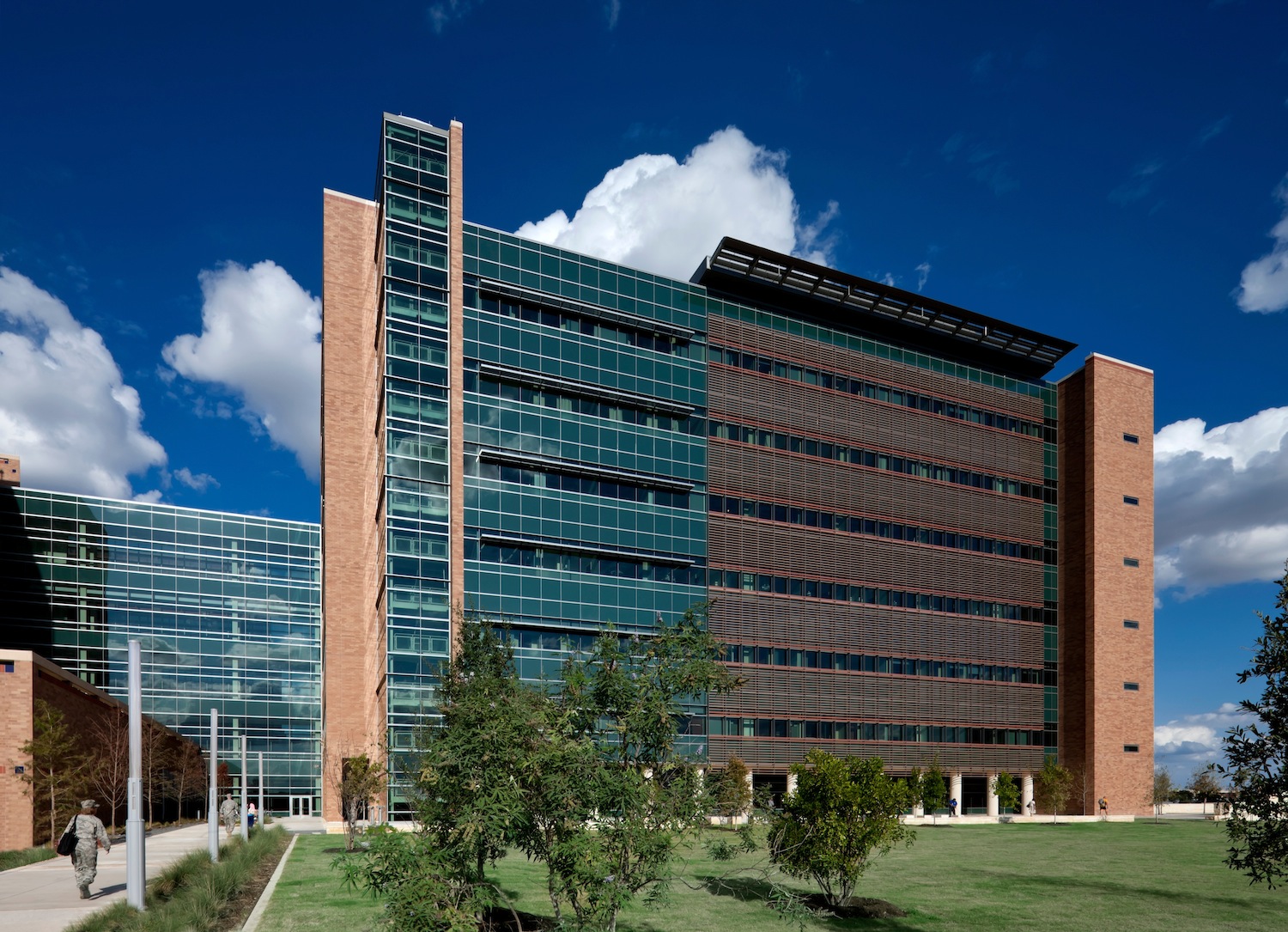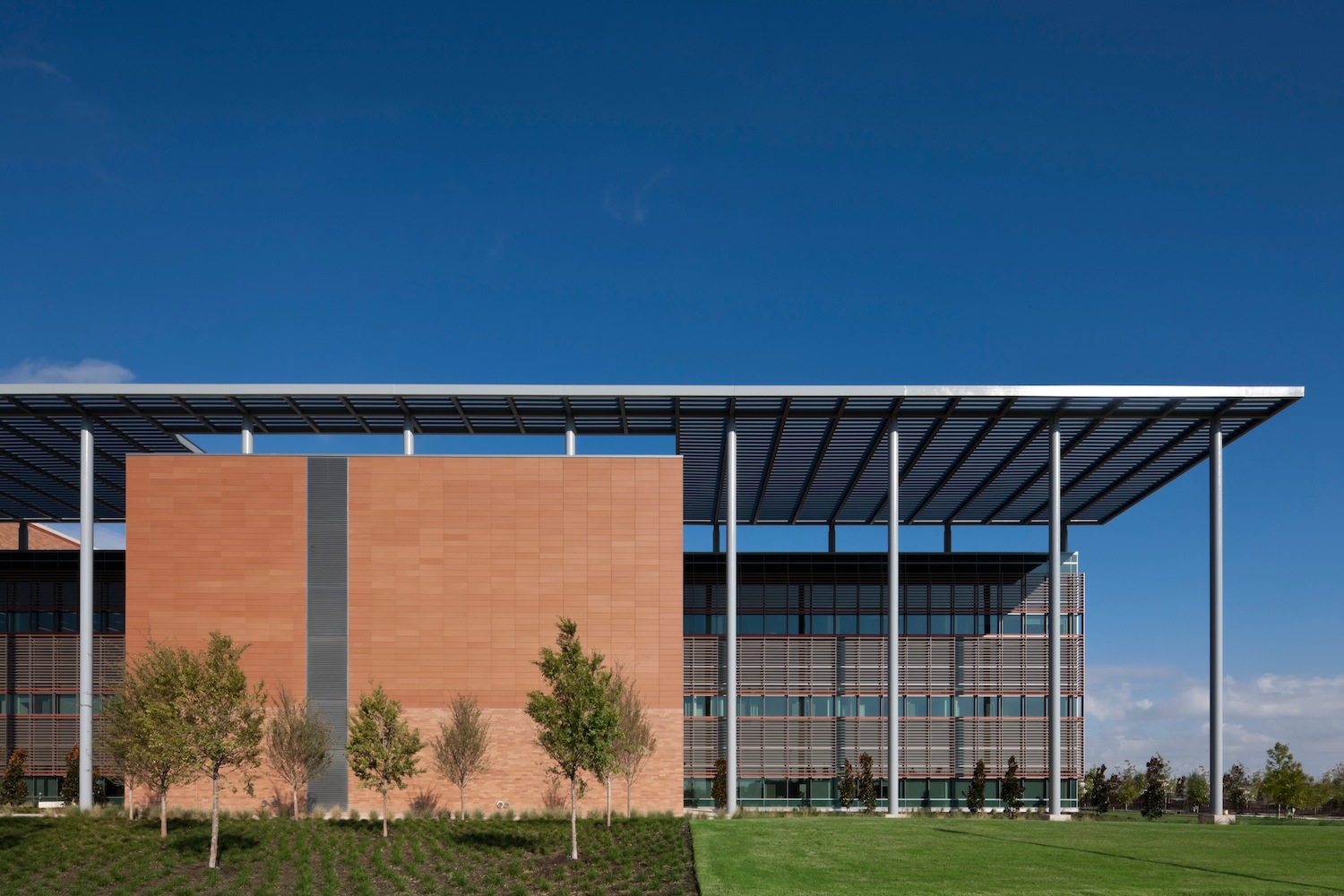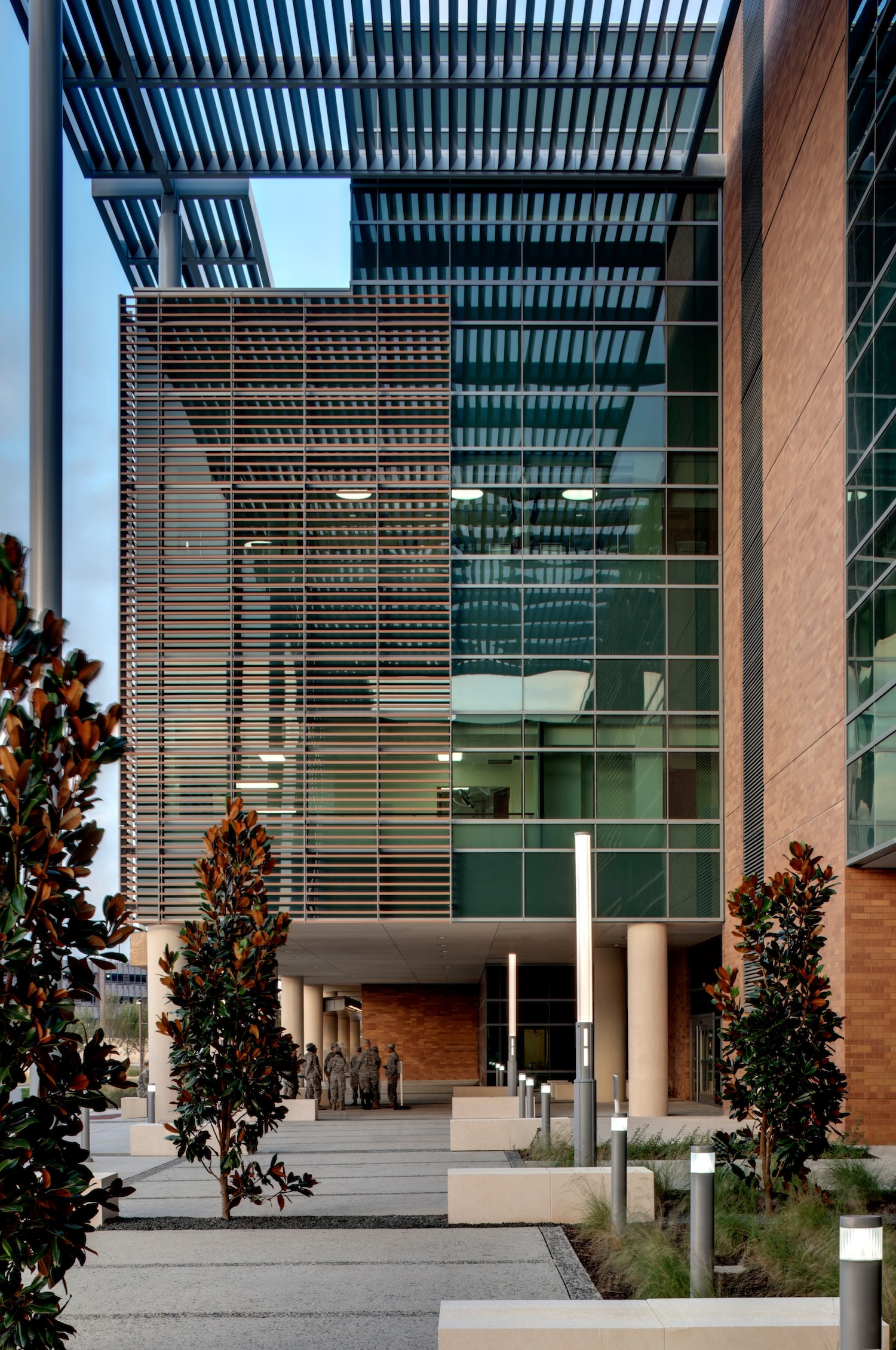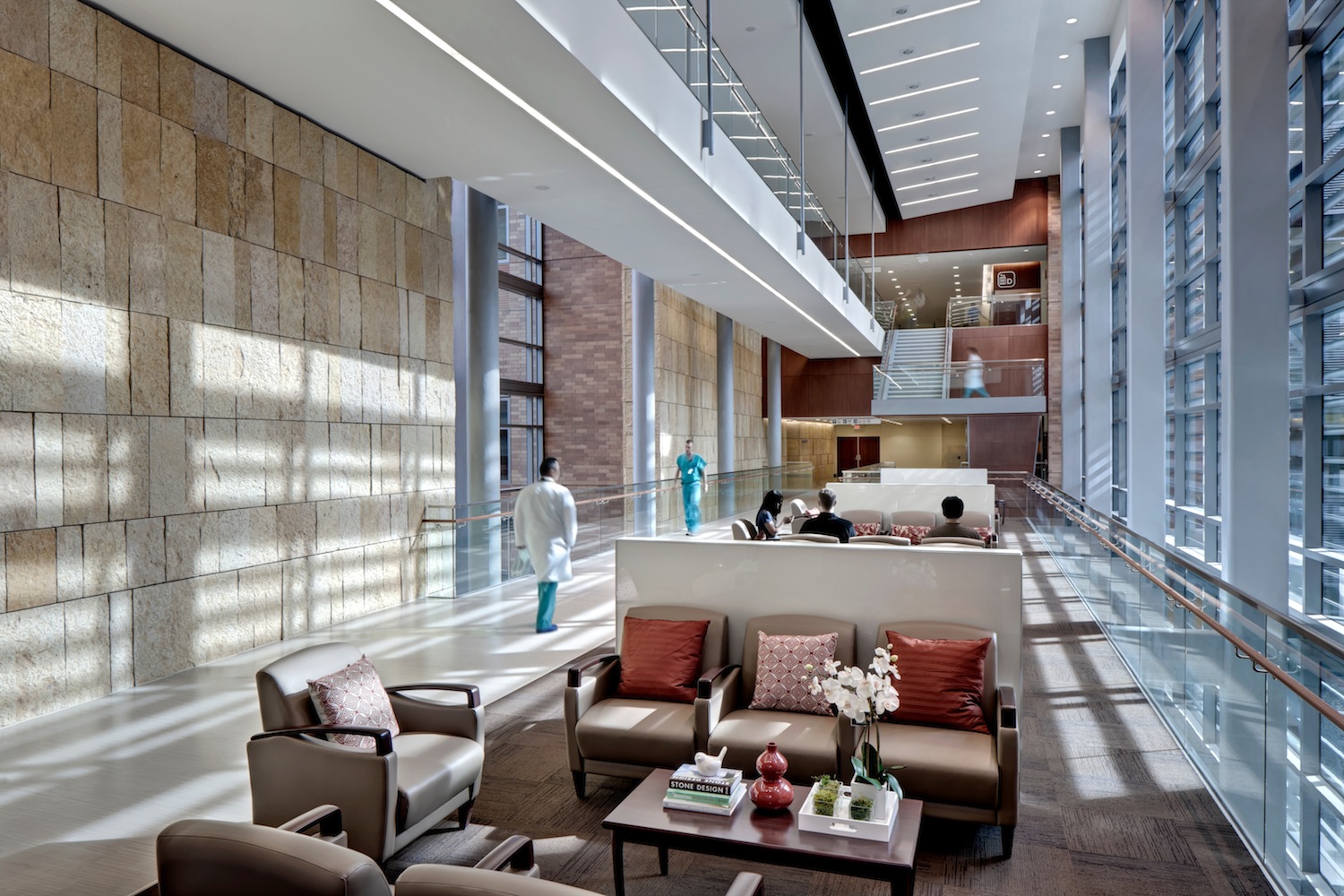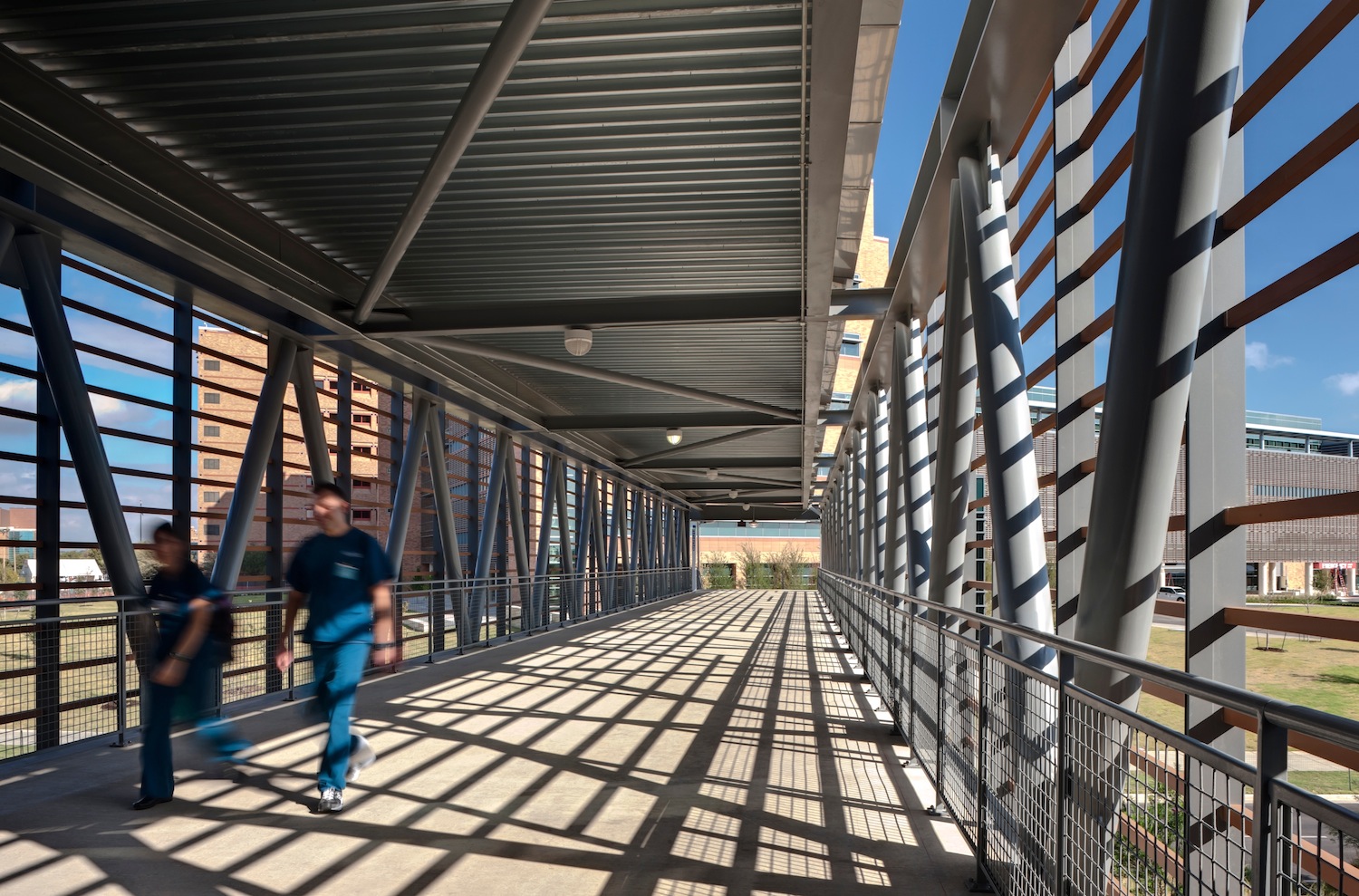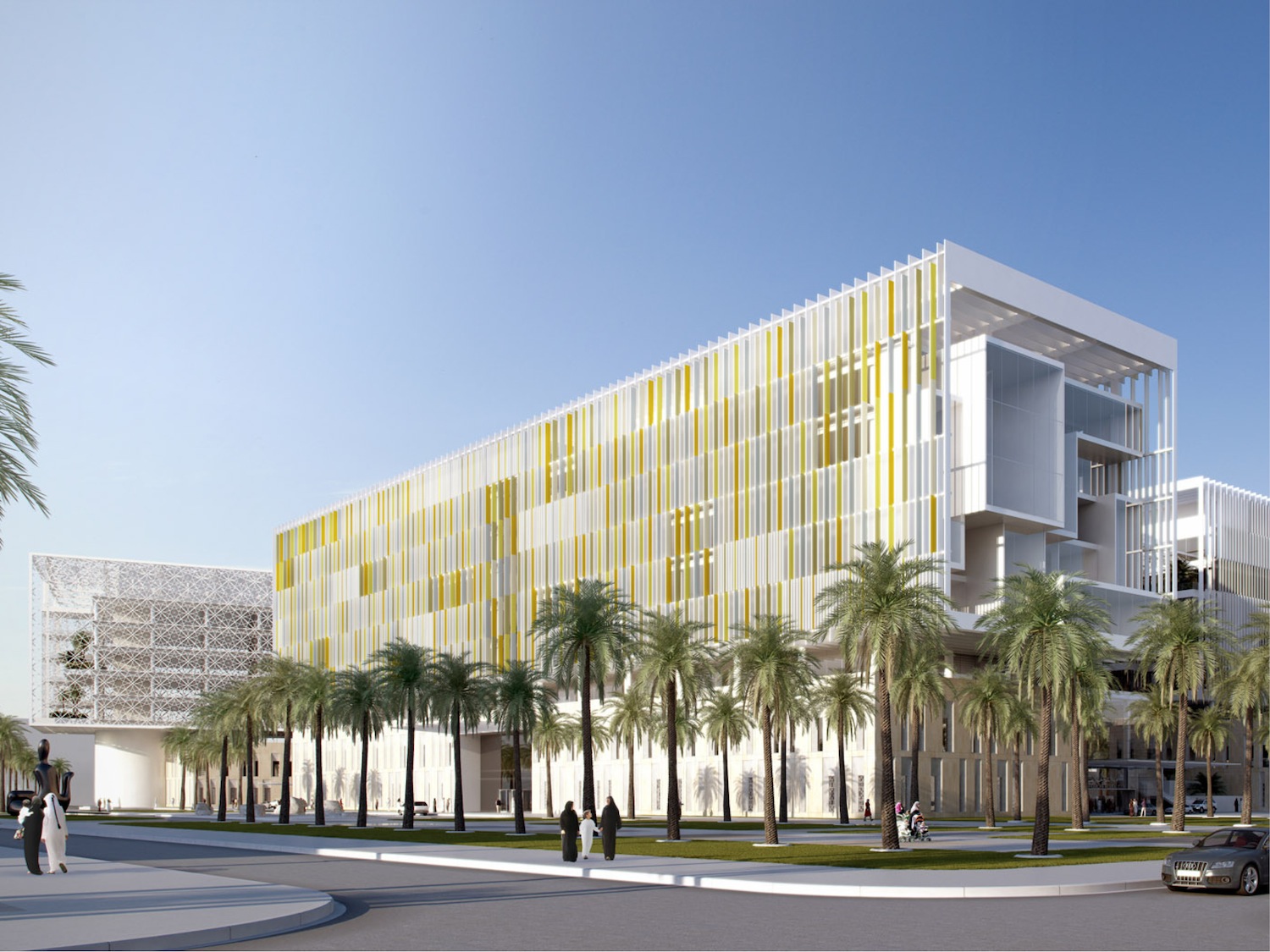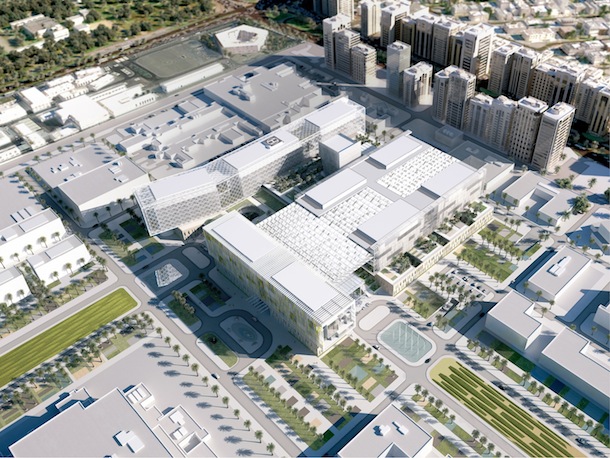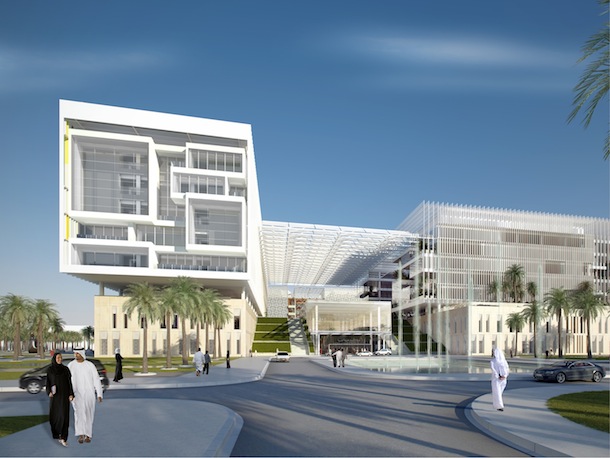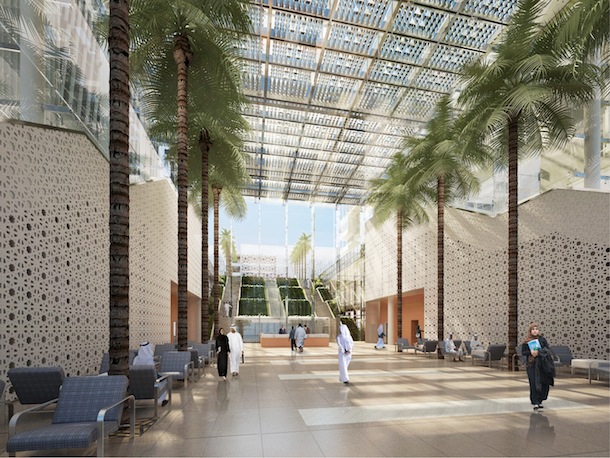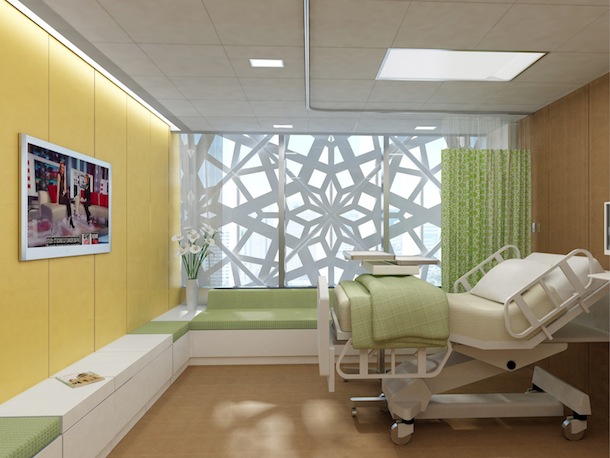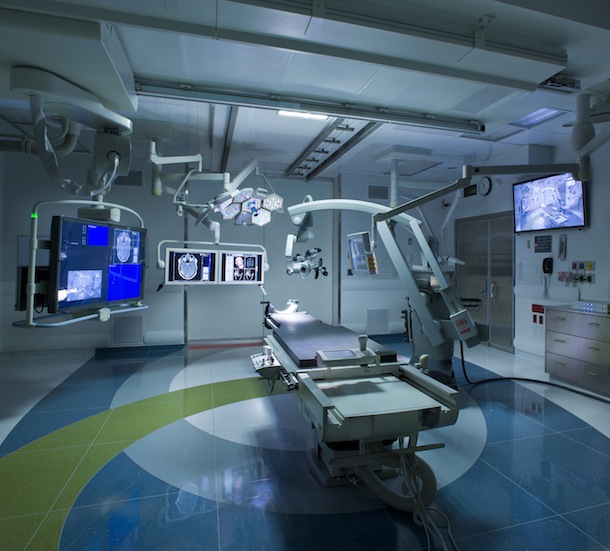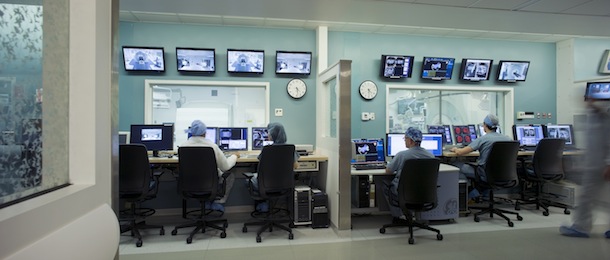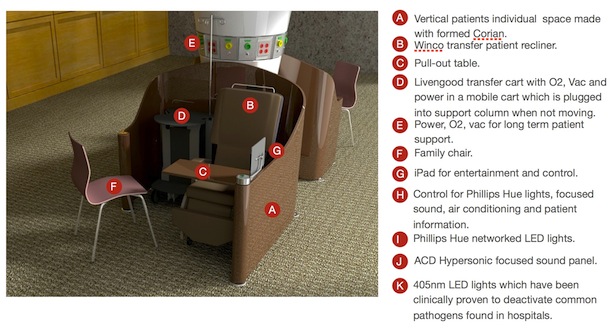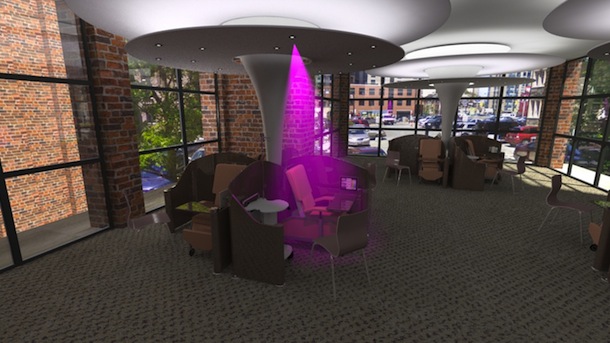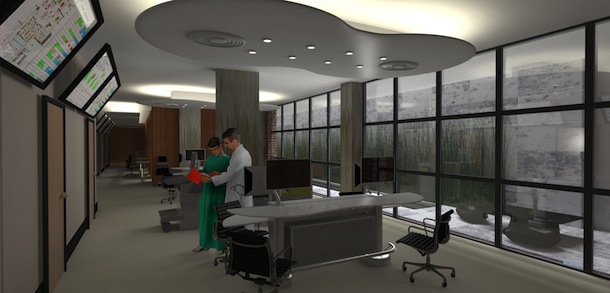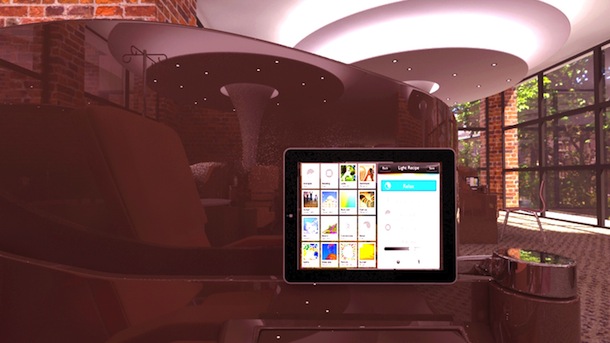7. San Antonio Military Medical Center an addition to the Brooke Army Medical Center; Fort Sam Houston, Texas
RTKL Associates, Inc.
The San Antonio Military Medical Center (SAMMC) is the largest inpatient medical center for the U.S. Department of Defense and the agency’s only American Burn Associated-verified burn center. The building, which opened in 2011, adds 102 beds, a rehabilitation clinic, expanded operating room capabilities, a new emergency department and a new patient bed tower. It also includes a parking structure for 5,000 vehicles, and ancillary support and infrastructure. RTKL was commissioned to design the new 760,000 -square-foot, LEED Silver certified building after working on a number of other projects for the U.S. Army Corps of Engineers in support of their 2005 Base Realignment and Closure (BRAC) initiative. Photos: Charles Davis Smith courtesy RTKL
Category C: Unbuilt
8. Sheikh Khalifa Medical City; Abu Dhabi, UAE
Skidmore, Owings & Merrill in a joint venture with ICME & Tilke as ITS
Sheikh Khalifa Medical City (SKMC) is an 838-bed medical complex in the heart of Abu Dhabi. Designed by Skidmore, Owings & Merrill LLP (SOM) in a joint venture with ICME and Tilke, SKMC contains three hospitals under one roof, combining a General Hospital, tertiary Women’s Hospital, and Pediatric Hospital. This model enhances patient care through specialization while improving efficiency through shared services. Envisioned as a city within a city, the design creates a bustling campus-like environment of distinct character and is based on the notion of patients as guests. The project’s lobbies and public spaces convey a sense of serenity through spaciousness, natural materials and diffused natural light. Renderings: SOM
Category D: Innovations in Planning and Design Research, Built and Unbuilt
9. Brigham and Women's Hospital, Advanced Multimodality Image Guided Operating Room (AMIGO); Boston
Payette
In the groundbreaking clinical research facility, Brigham and Women’s Hospital’s AMIGO Suite, an operating room is linked to adjacent imaging suites, enabling the patient to remain static while the machines—including a 33,000-pound MRI—move from one chamber to another in the midst of a surgical procedure. The array of infrastructure necessary to enable this technology was deftly concealed behind walls and above ceilings, which were kept neutral in appearance so as not to compete with critical patient information displays. The kinetic qualities of the suite are captured on the floor, where the arc of the operating table’s rotation and the limits of the magnet’s Gaussian surfaces are vividly rendered in a palette of colors derived from the facility’s cutting-edge equipment. Photos: Warren Jagger Photography
10. Rethinking the need for emergency department beds
Lennon Associates
The project was to reduce the number of beds, staff and patient waiting times in a major teaching hospital emergency department while at the same time, increase patient safety and comfort. This study concluded that 60% of emergency department patients did not need to be in a bed, but could be seen in a less intense setting. Building less beds, needs less staff and requires a new physical layout to accommodate the new patient flow. That gave rise to new possibilities of enhanced patient spaces with amenities resembling that of airline first class accommodations. Computer simulations were liberally used to establish the size and staffing required for the new patient flow model. That was further buttressed by physical trials using actual patients. Renderings: Lennon Associates
11. Kaleida Health, Gates Vascular Institute and UB Clinical Translational Research Center; Buffalo, New York
Cannon Design
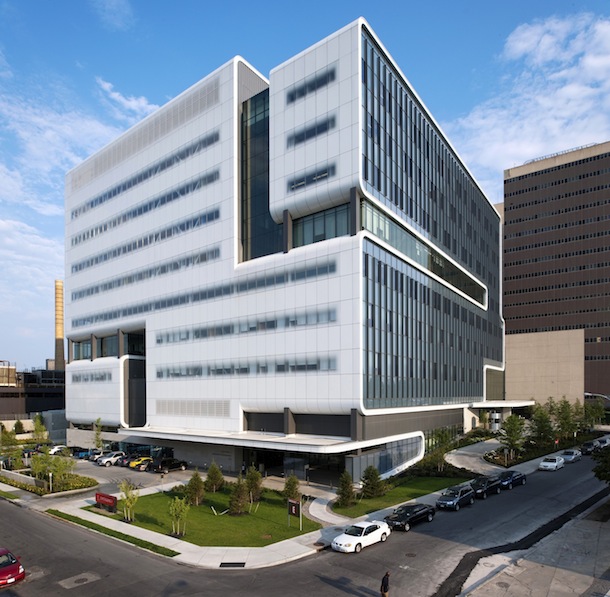
Photo: Thomas Mayer Photography
The spirit of collaboration was the driving force uniting Kaleida Health and the University at Buffalo within a single structure, and the building strives to bring several disciplines and its patients, surgeons and researchers, together to exchange knowledge and ignite innovation. The 476,000-square-foot facility achieves this by stacking a translational research building over a clinical vascular institute. The first four floors of this 10-story “vertical campus,” house the Gates Vascular Institute, with the Clinical Translational Research Center occupying the top half of the building. Sandwiched between the two, is a two-level “collaborative core”—the binder that connects doctors and researchers from varying specialties to meet in a variety of dynamic situations to accelerate medical discoveries—moving science from the bench to the bedside.
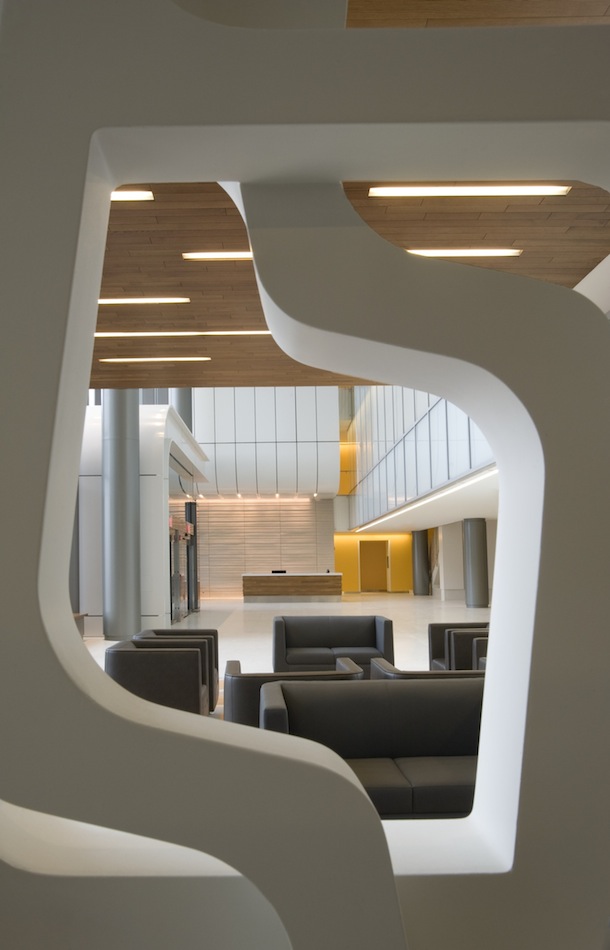
Photo: Bjorg Magnea Architectural & Interior Photography
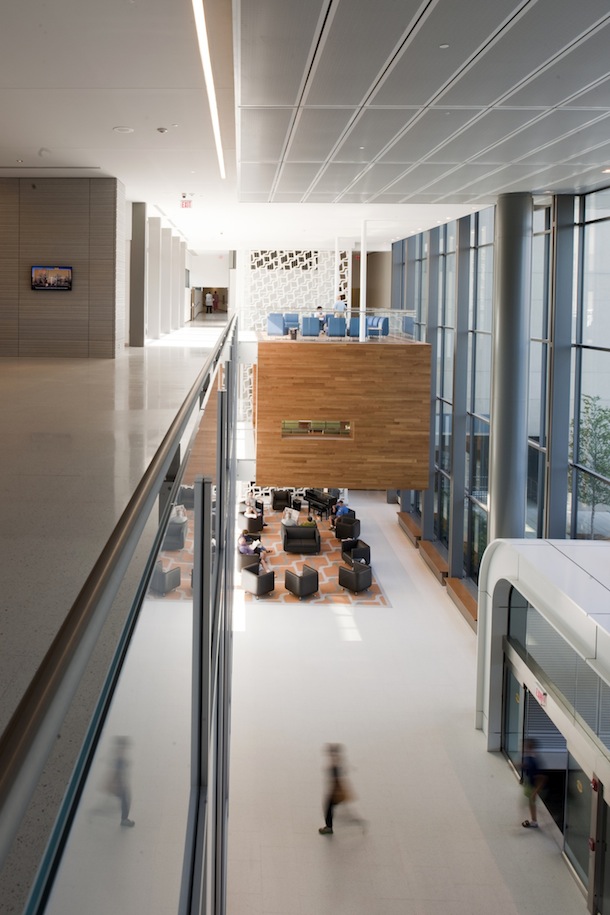
Photo: Thomas Mayer Photography
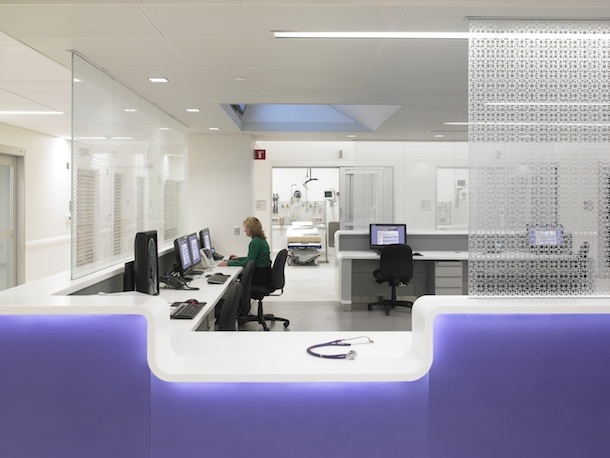
Photo: Tim Wilkes Photography
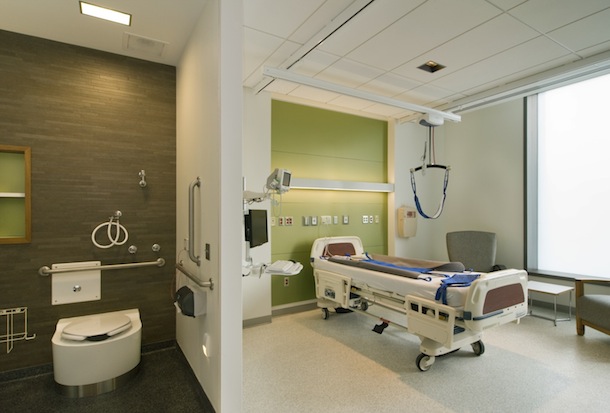
Photo: Bjorg Magnea Architectural & Interior Photography
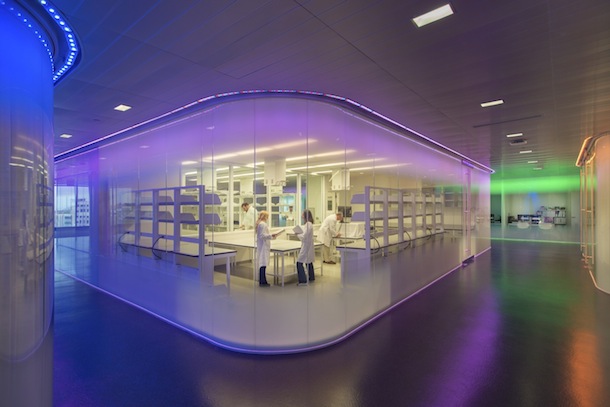
Photo: Tim Wilkes Photography
Category E: Master Planning Urban Design for Healthcare Settings
12. Focal Point Community Campus; Chicago
HDR Architecture, Inc.
Located in Southwest Chicago, it is one of the most vibrant, yet blighted, neighborhoods in the city. Acting as both an anchor and a change agent, the hospital is envisioned as an urban campus that fosters a relationship between the hospital and its community. The two are intrinsically linked by a “circulatory system” – a band of food and retail markets, fitness centers, etc. that runs along the third floor of the building. This system serves as the interface between the world of healthcare and the world beyond, and it literally brings the two together – a new paradigm in the industry. Furthermore, the building treads lightly on the site. Its ground floor is wrapped with glass and its grounds are replete with wellness gardens, soccer fields, and basketball courts. Renderings: HDR Architecture
For more, see the AIA press release.
Related Stories
| Aug 11, 2010
City of Anaheim selects HOK Los Angeles and Parsons Brinckerhoff to design the Anaheim Regional Transportation Intermodal Center
The Los Angeles office of HOK, a global architecture design firm, and Parsons Brinckerhoff, a global infrastructure strategic consulting, engineering and program/construction management organization, announced its combined team was selected by the Anaheim City Council and Orange County Transportation Authority (OCTA) to design phase one of the Anaheim Regional Transportation Intermodal Center.
| Aug 11, 2010
GBCI launches credentialing maintenance program for current LEED APs
The Green Building Certification Institute (GBCI) launched a credentialing maintenance program (CMP) for LEED APs and Green Associates, ensuring that LEED professional credentials will remain relevant and meaningful in a rapidly evolving marketplace.
| Aug 11, 2010
Construction employment shrinks in 319 of the nation's 336 largest metro areas in July, continuing months-long slide
Construction workers in communities across the country continued to suffer extreme job losses this July according to a new analysis of metropolitan area employment data from the Bureau of Labor Statistics released today by the Associated General Contractors of America. That analysis found construction employment declined in 319 of the nation’s largest communities while only 11 areas saw increases and six saw no change in construction employment between July 2008 and July 2009.
| Aug 11, 2010
Green consultant guarantees LEED certification or your money back
With cities mandating LEED (Leadership in Energy and Environmental Design) certification for public, and even private, buildings in growing numbers, an Atlanta-based sustainability consulting firm is hoping to ease anxieties over meeting those goals with the industry’s first Green Guaranteed.
| Aug 11, 2010
Architecture Billings Index bounces back after substantial dip
Exhibiting a welcome rebound following a 5-point dip the month prior, the Architecture Billings Index (ABI) was up almost 6 points in July. As a leading economic indicator of construction activity, the ABI reflects the approximate nine to twelve month lag time between architecture billings and construction spending. The American Institute of Architects (AIA) reported the July ABI rating was 43.1, up noticeably from 37.7 the previous month.
| Aug 11, 2010
Rafael Vinoly-designed East Wing opens at Cleveland Museum of Art
Rafael Vinoly Architects has designed the new East Wing at the Cleveland Museum of Art (CMA), Ohio, which opened to the public on June 27, 2009. Its completion marks the opening of the first of three planned wings.
| Aug 11, 2010
National Association of Governors adopts AIA policy of reaching carbon neutrality in buildings by 2030
As part of their comprehensive national Energy Conservation and Improved Energy Efficiency policy, the National Association of Governors (NGA) has adopted the promotion of carbon neutral new and renovated buildings by 2030 as outlined by the American Institute of Architects (AIA).


